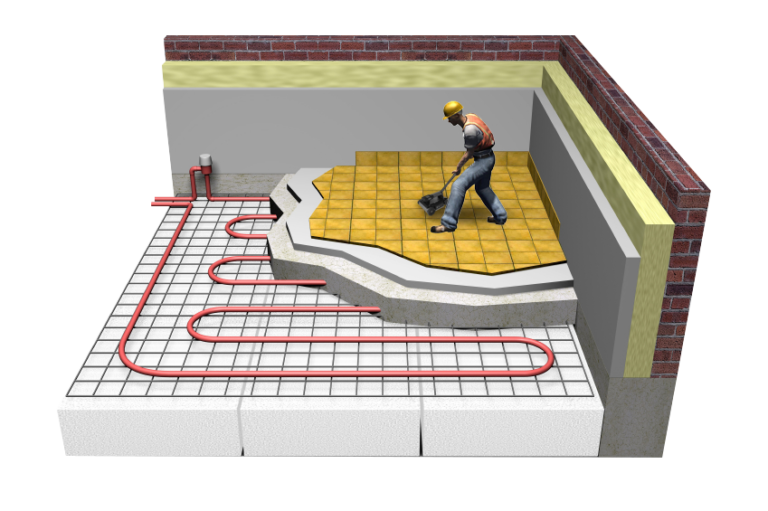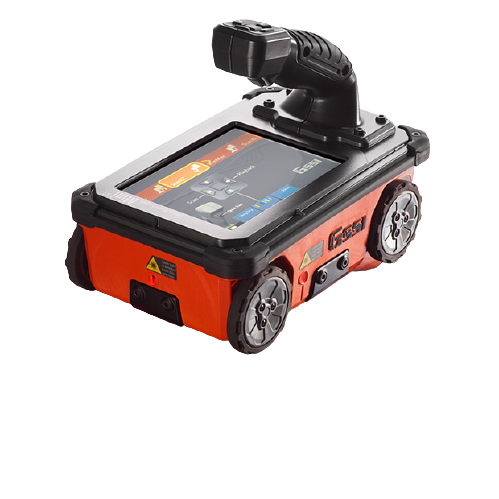The Advantages of RainierGPR Concrete Scanning for Construction Projects
The Advantages of RainierGPR Concrete Scanning for Construction Projects
Blog Article
Exploring the Secret Advantages of Concrete Scanning in Building And Construction Projects
In the world of modern building techniques, the utilization of concrete scanning modern technology has actually become a crucial tool for making sure project efficiency and architectural honesty. From boosting security measures to properly discovering energies hidden underneath the surface area, the benefits of concrete scanning are complex. The capability to simplify task timelines and minimize prices while maintaining existing frameworks is a testament to the worth this innovation brings to the building market. As we dive into the nuanced benefits of concrete scanning, it becomes obvious that its influence expands far beyond surface-level evaluations, using a glimpse into the elaborate web of benefits waiting to be uncovered.
Improved Precaution
Making use of sophisticated concrete scanning technology enhances safety and security steps on building and construction sites by providing exact discovery of prospective hazards concealed below the surface. This technology enables building teams to recognize rebar, avenues, post-tension cables, and other blockages prior to excavation or exploration, dramatically lowering the threat of accidents. By identifying these aspects precisely, workers can prevent destructive essential architectural components, hence avoiding injuries, delays, and costly repair work.
Furthermore, concrete scanning plays a crucial function in guaranteeing the honesty of existing structures throughout expansions or restorations. By discovering weak points, spaces, or deterioration within concrete aspects, engineers can attend to these issues proactively, boosting the total safety and longevity of the building. This proactive approach not only reduces the threat of architectural failings but likewise minimizes the potential for crashes created by unpredicted architectural deficiencies.
In essence, the execution of concrete scanning technology acts as a proactive security step that safeguards both construction workers and the structural honesty of structures, eventually adding to the general success and efficiency of building and construction projects. - RainierGPR Concrete Scanning
Accurate Detection of Energies
Concrete scanning modern technology promotes specific recognition of underground utilities, boosting construction website security and effectiveness. Exact discovery of energies is important in building tasks to stop pricey damages, job delays, and most notably, guarantee the safety of workers and the public. By using sophisticated scanning modern technologies such as ground-penetrating radar (GPR) and electro-magnetic induction, construction groups can map out the location of hidden pipelines, wires, and various other utilities with high levels of precision.

Time and Cost Effectiveness

Concrete scanning technology makes it possible for building teams to accurately situate rebar, post-tension cable televisions, and various other embedded objects within concrete structures. This precise details assists in preventing costly errors such as unintended damage to crucial elements throughout drilling, cutting, or coring tasks. In addition, by identifying possible risks in advance, the demand for pricey repairs or remodel because of problems can be decreased, leading to set you back savings for the task.

Additionally, the ability to swiftly and accurately spot energies beneath the surface without triggering any kind of damages not just conserves time however additionally protects against expensive disruptions to existing framework. On the whole, the time and price effectiveness benefits of concrete scanning make it a very useful device for improving building task administration and execution.
Preservation of Structural Honesty
Maintaining the structural honesty of structures and framework is extremely important in making sure lasting security and safety and security. Concrete scanning plays an essential role in this preservation process by allowing building experts to recognize potential hazards to the architectural honesty of a structure or framework before they escalate right into major concerns. Through the use of advanced scanning modern technologies such as ground-penetrating radar (GPR) and electromagnetic induction, building teams can non-invasively evaluate the problem of concrete frameworks, find rebar, post-tension Our site cable televisions, and various other embedded components, and identify any voids, fractures, or damage within the concrete.
Improved Job Preparation
In order to ensure the successful implementation of building and construction tasks, meticulous interest to information and thorough planning are important elements that come from an extensive understanding of the structural conditions recognized with concrete scanning. Improved job preparation, helped with by concrete scanning, allows building teams to preemptively deal with prospective difficulties, assign sources a lot more efficiently, and establish sensible timelines. By properly identifying the area of rebar, post-tension cables, and other ingrained objects within concrete frameworks, task supervisors can develop more exact construction plans that minimize the danger of expensive errors or hold-ups. Furthermore, the information obtained from concrete scanning makes it possible for stakeholders to make educated choices concerning architectural modifications, restorations, or growths, causing smoother project transitions and enhanced total job end results. Ultimately, incorporating concrete scanning into the project preparation stage enhances control amongst staff member, cultivates aggressive problem-solving, and contributes to the effective delivery of building tasks within budget plan and schedule restrictions.
Conclusion
To conclude, concrete scanning supplies numerous benefits in building projects. By enhancing precaution, precisely detecting energies, improving time and price efficiency, maintaining architectural honesty, and helping in task preparation, concrete scanning shows to be a crucial tool for successful project implementation. Its ability to minimize threats, boost performance, and make certain project integrity makes it a crucial asset for construction professionals.
In the realm of contemporary building methods, the application of concrete scanning technology has other emerged as a critical tool for ensuring project efficiency and structural integrity.Concrete scanning modern technology allows building and construction groups to accurately situate rebar, post-tension cords, and various other embedded objects within concrete structures. Through the use of sophisticated scanning technologies such as ground-penetrating radar (GPR) and electro-magnetic induction, building groups can non-invasively analyze the problem of concrete structures, situate rebar, post-tension cable televisions, and various other embedded aspects, and recognize any kind of gaps, splits, or deterioration within the concrete.
In order to ensure the successful implementation of building and construction navigate to this website tasks, thorough attention to information and detailed planning are vital elements that stem from a comprehensive understanding of the structural conditions determined via concrete scanning. Inevitably, incorporating concrete scanning right into the job planning stage boosts sychronisation amongst group participants, promotes aggressive analytic, and adds to the effective shipment of building and construction jobs within spending plan and routine constraints.
Report this page